Short posts on the state and future of L&D, written by Igor Čenar, CEO of JollyDeck, and Matija Hiti, Chief of the JollyDeck Platform.
L&D tidbits
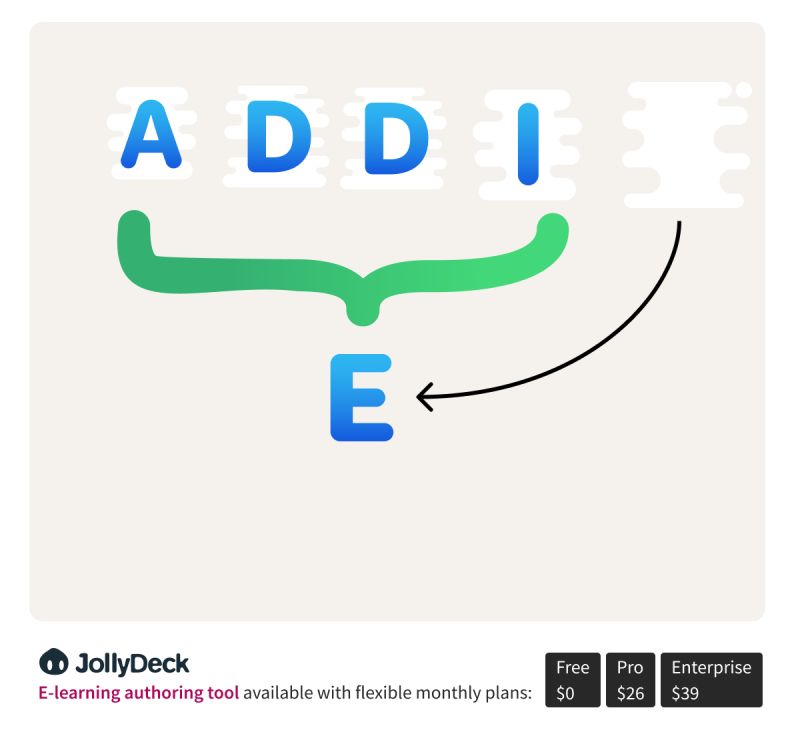
Matija Hiti, 20/09/2024
Rethinking evaluation in ADDIE
Why is evaluation placed at the end of the ADDIE model? While it seems logical to assess learning results at the conclusion, we’ve learned that waiting too long makes it harder to fix issues. Just as in agile development, instructional design benefits from testing and evaluating at every stage for improved outcomes.
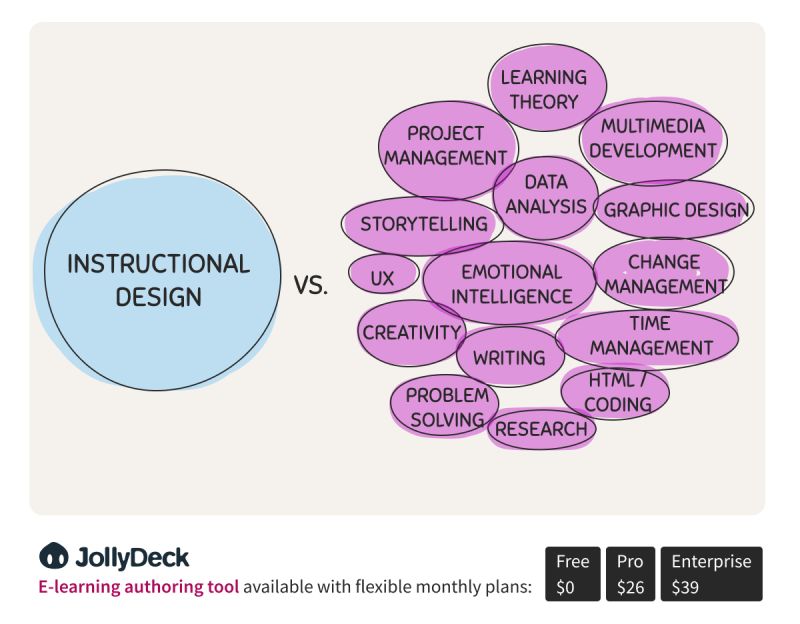
Slovenia, where I’m from, has a rich cultural history, with Slovene still containing some German words. Two I find useful in my work are "Tausendsassa," meaning "jack of all trades," and "Fachidiot," or "over-specialised expert." Instructional design, with its diverse skill set, certainly favours the Tausendsassa!
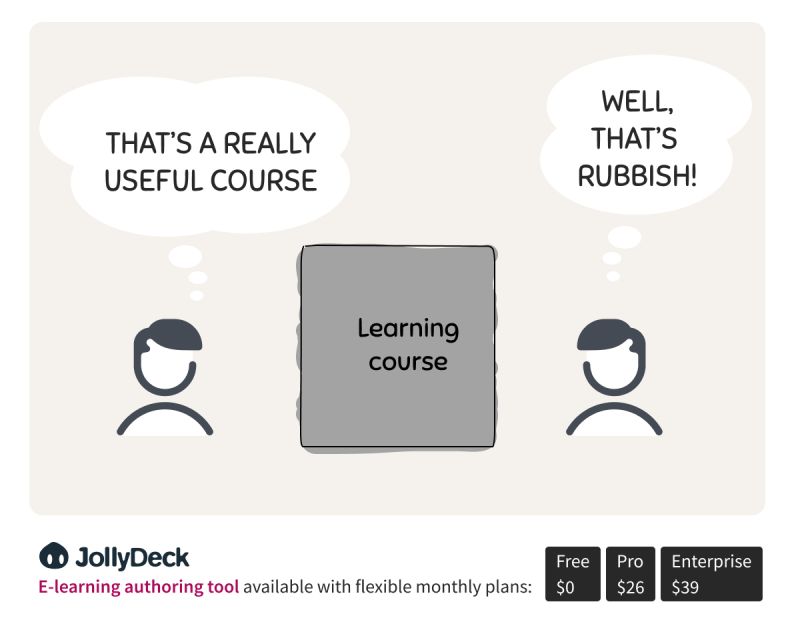
Matija Hiti, 12/09/2024
Creating learning that matters
The line between useful and useless learning content lies in the eye of the beholder. While it's impossible to please everyone, skilled instructional designers focus on creating content tailored to a specific audience. That’s why a proper needs analysis is essential before designing any material.
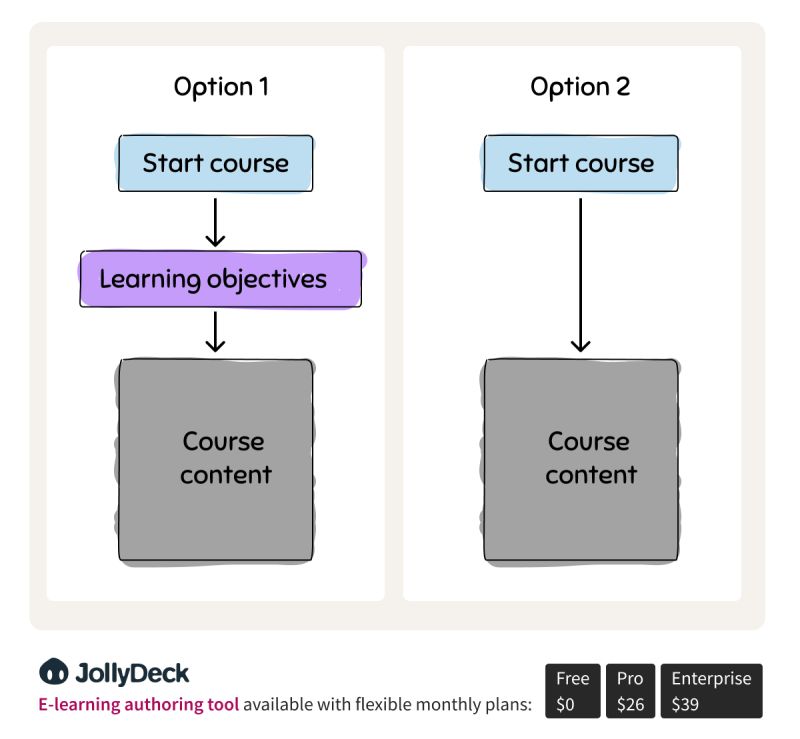
Matija Hiti, 09/09/2024
Why learning objectives matter
Every e-learning course should kick off with learning objectives. Just like in marketing, where building interest is key to a sale, learners need to know the value of what they’ll gain. Crafting objectives that answer "What's in it for me?" is essential to keep users engaged from the start.

Matija Hiti, 06/09/2024
Hidden rules of instructional design
Ever run into the unwritten rules of instructional design? In 2024, it feels like everything has already been written, but a couple of things still puzzle me. First, the term "design" has multiple meanings depending on the phase, and second, the roles of instructional and e-learning designers are often blurred.
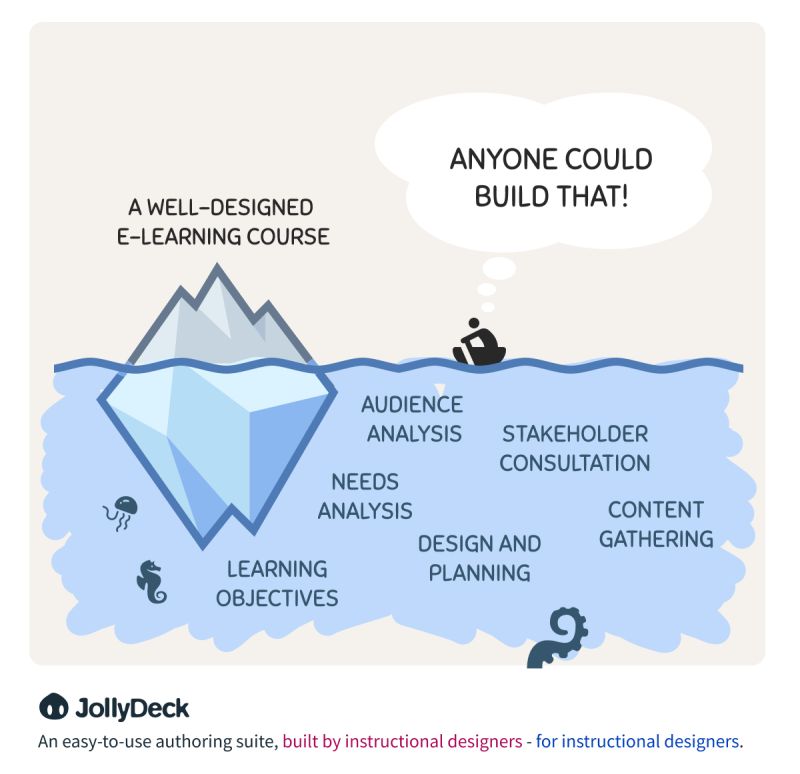
Matija Hiti, 05/09/2024
The myth of easy e-learning creation
Ever used an OBD2 diagnostic tool? It’s a simple device that shows what’s wrong with your car, but it doesn’t turn you into a mechanic. The same goes for e-learning tools. While they make the process easier, creating truly effective learning requires much more than just using the right software.
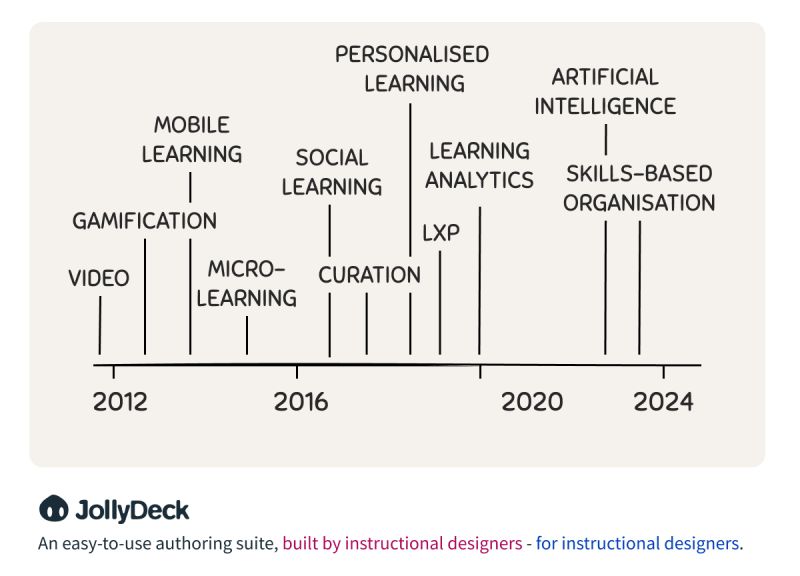
Matija Hiti, 02/09/2024
The fate of disruptive ideas in L&D
Disruptive ideas in learning and development often melt away like snow in summer. Concepts like gamification have vanished, while others, like microlearning, continue to evolve the field. Will AI truly disrupt the way we work, or will it follow the same path? Time will tell.
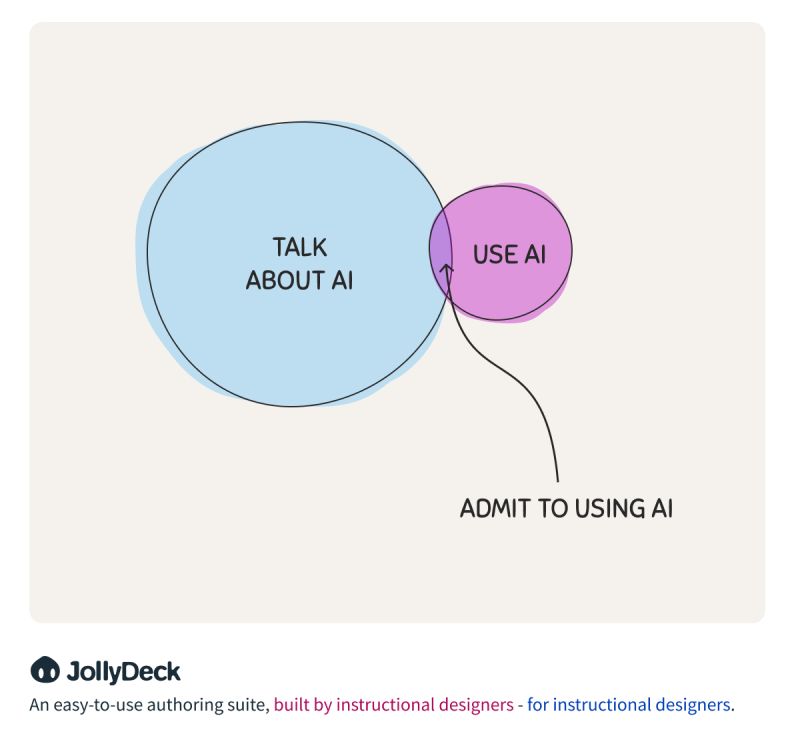
Matija Hiti, 30/08/2024
The quiet rise of AI at work
AI is all the rage, yet not everyone admits they’re using it. While some embrace it, others operate in secret, whether due to organisational policies or personal preference. What’s certain is AI is quietly helping people work more productively, even behind closed doors.
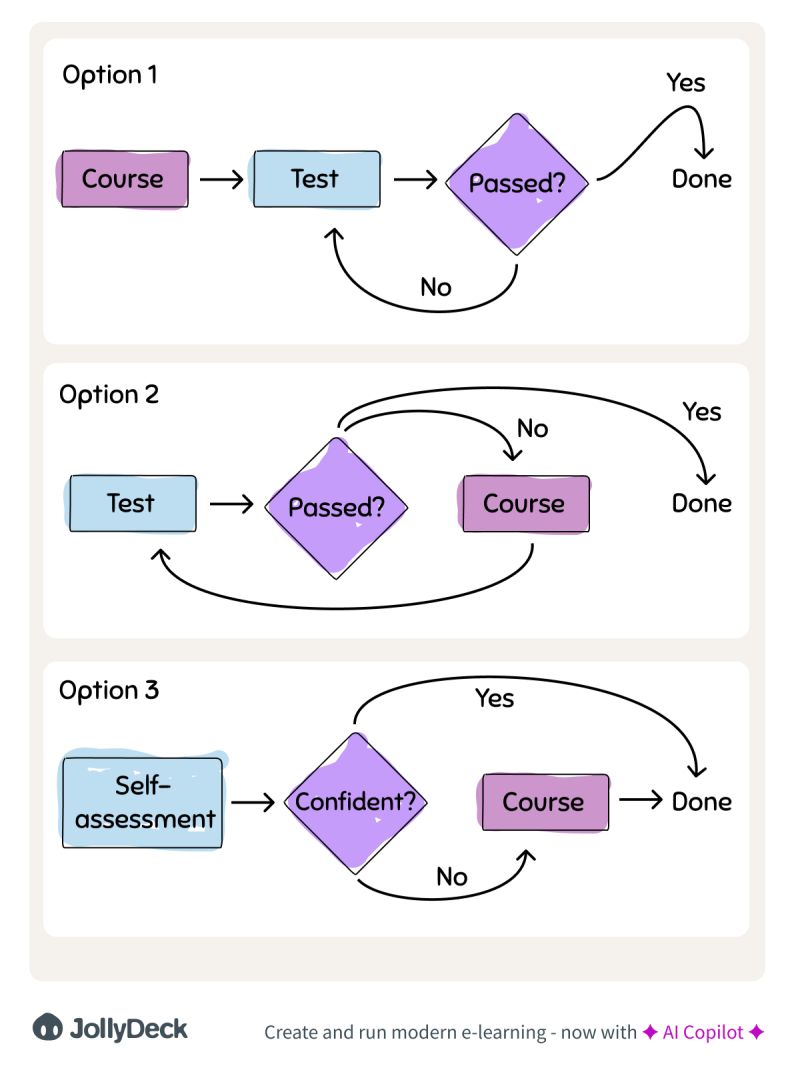
Matija Hiti, 28/08/2024
Rethinking e-learning structure
Most e-learning courses begin with content and wrap up with a test. But is this the best way to ensure learning success? We’ve been exploring different formats, though applying them isn’t always straightforward. How do you approach combining courses and assessments?
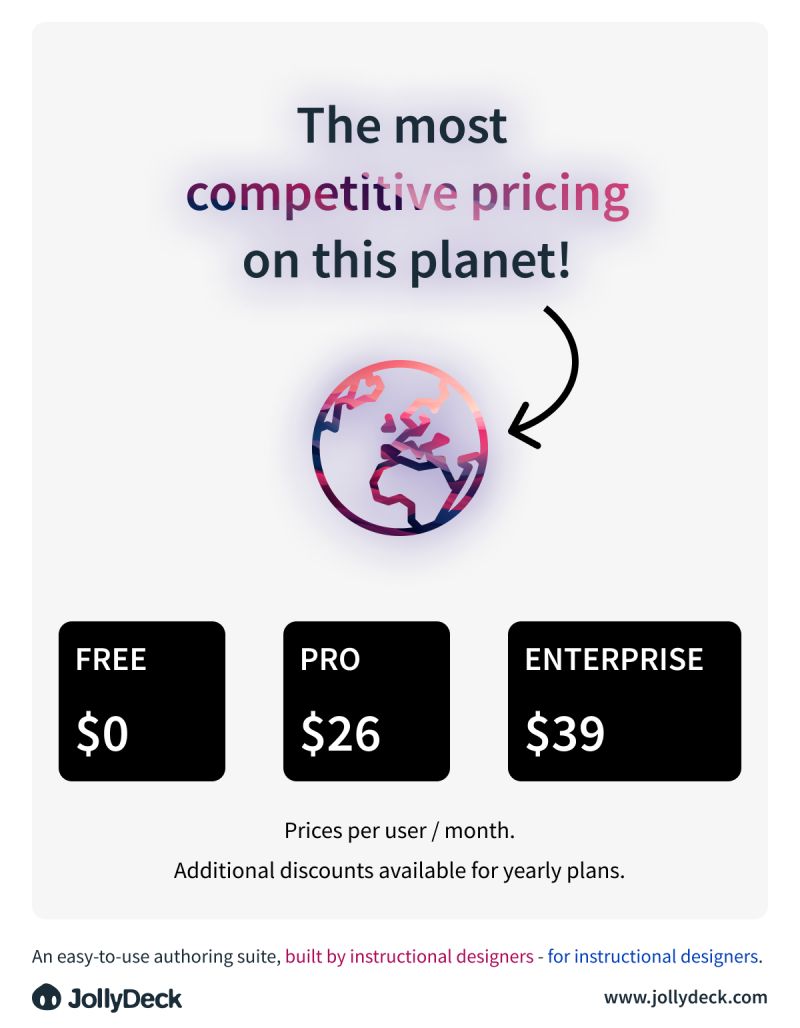
Matija Hiti, 27/08/2024
Affordable e-learning tools
💲💲💲 E-learning authoring tools are notoriously expensive! Over 100 instructional designers agree. The market is flooded with tools, but many come with steep prices and restrictive subscriptions. Enter JollyDeck—affordable, powerful, and fun. Try it for free and see the difference!
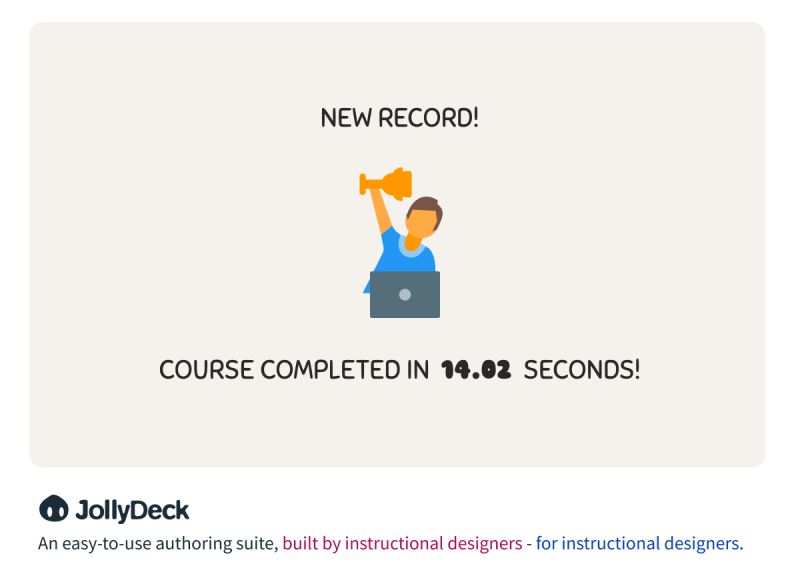
Matija Hiti, 26/08/2024
Battling fast clickers
👩🏻 - "How fast can you click through a course of 10 slides?"
🧑 - "My personal best is 14 seconds 🏆! Can you beat that?"
As an instructional designer, does such behaviour frustrate you? Understanding and addressing the root causes—like corporate culture or poor design—can be key to creating engaging content. What’s your approach to improving user engagement?
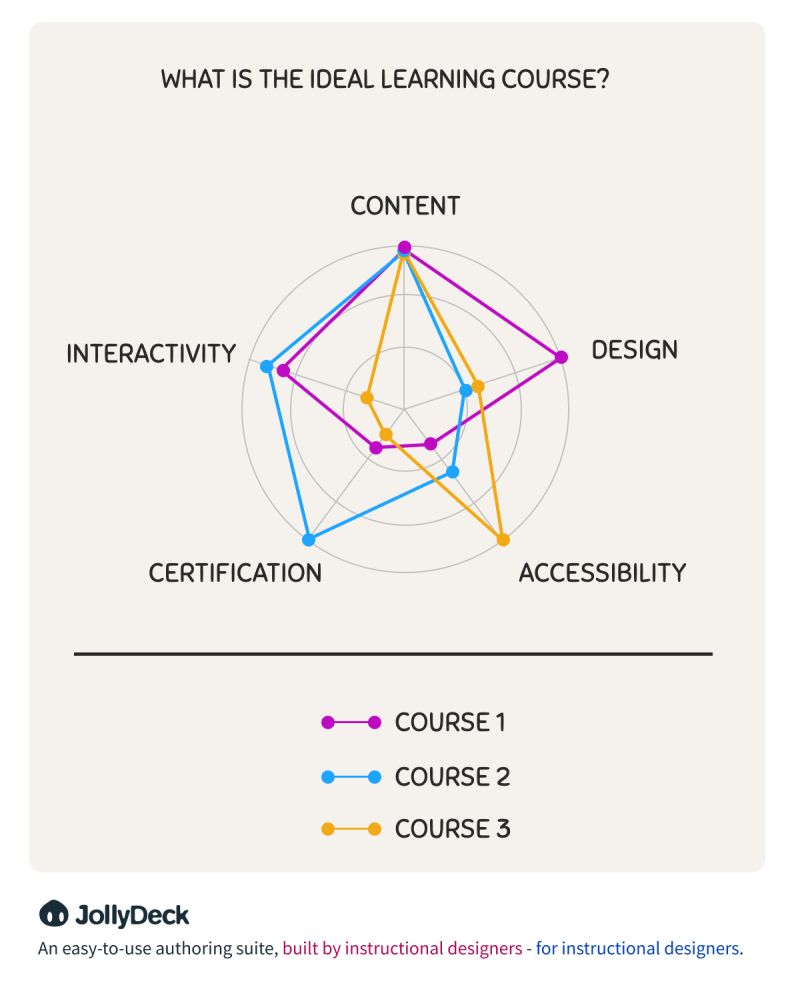
Matija Hiti, 22/08/2024
No such thing as a perfect course
There’s no such thing as a perfect learning course. While content is undeniably crucial, where should we direct our limited resources once that’s in place? As e-learning designers, we often make concessions. Should we define "good enough" with personal standards or industry-wide criteria?
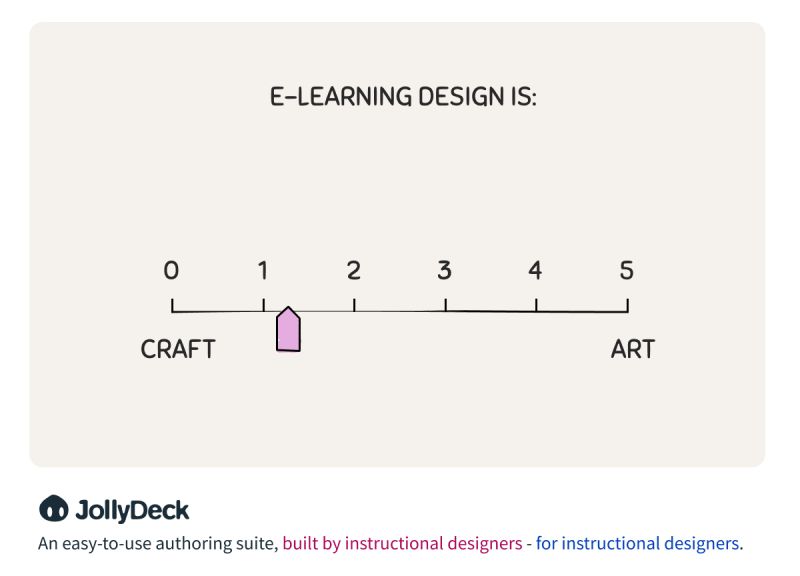
Matija Hiti, 20/08/2024
The art of e-learning design
E-learning design might not seem like the most artistic endeavour, but creativity remains a key advantage for human designers over AI. While workplace learning may not always call for artistic flair, it’s worth considering where to draw the line between creativity and functionality. Where do you place the slider?
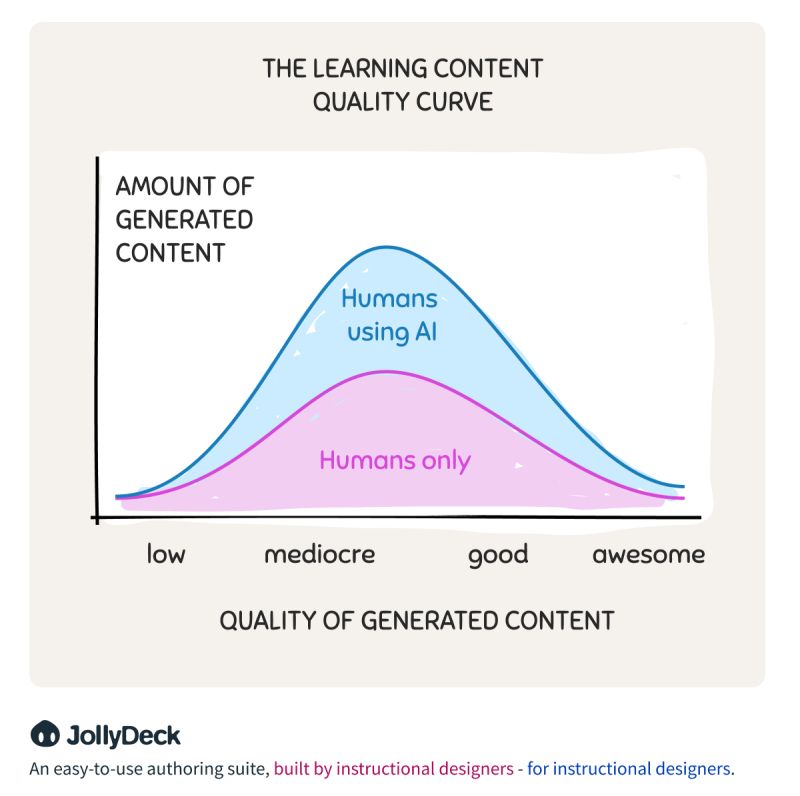
Matija Hiti, 19/08/2024
AI and quality in learning content
Here's a bold take: AI won't flood the market with low-quality learning content. In reality, AI can either help produce more content or raise the quality bar. For top-tier learning experiences, human creativity remains crucial. How would you use AI to enhance your learning content?
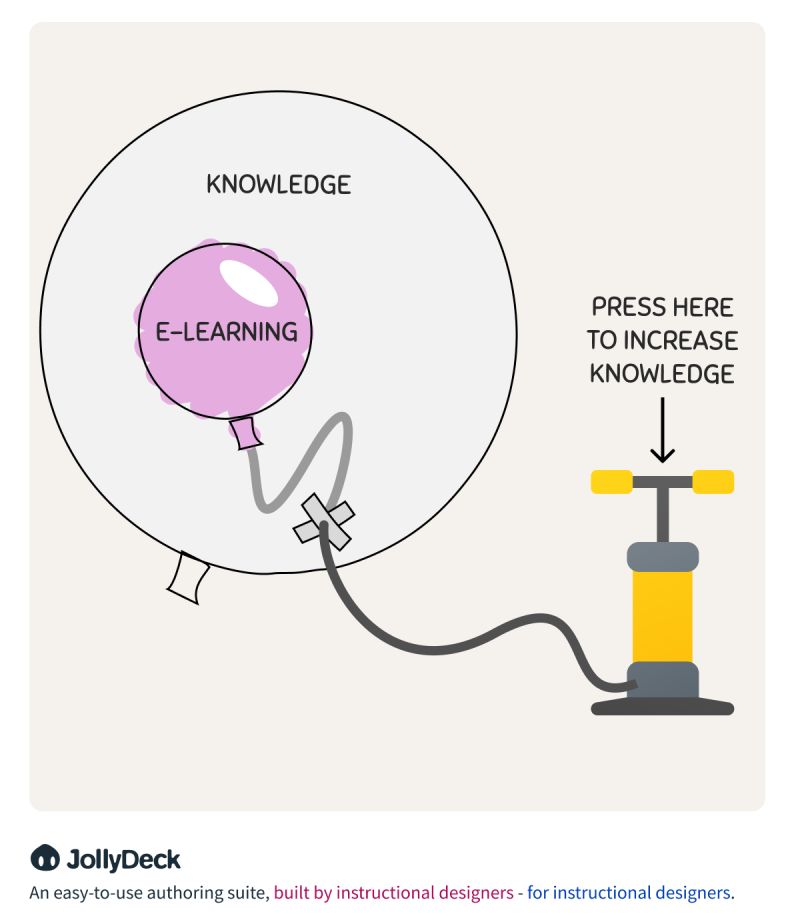
Matija Hiti, 16/08/2024
Learning is a balanced diet
No single learning method, including e-learning, can provide all the knowledge we need. Each type of learning contributes to our overall understanding, much like how a balanced diet supports our health. Incorporate e-learning into your mix to enhance your knowledge and growth.
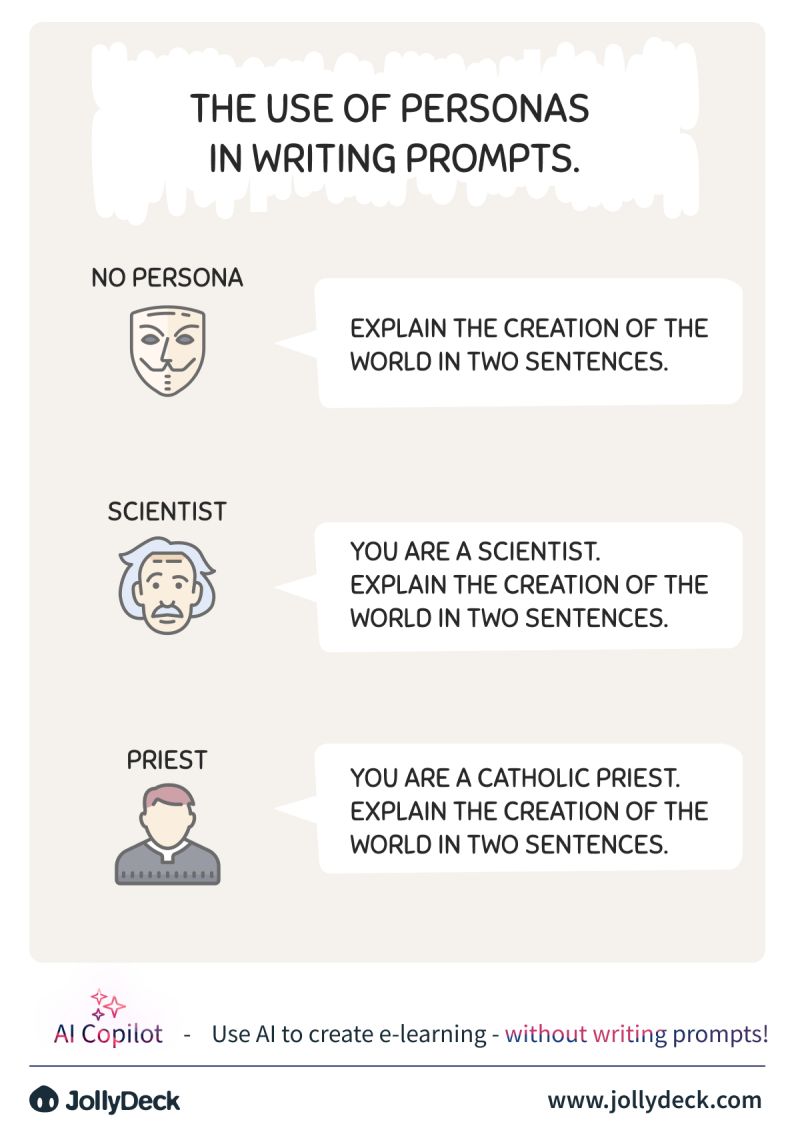
Matija Hiti, 15/08/2024
Using personas in AI prompts
99% of people don’t know how to use personas when writing AI prompts. While many think personas always improve results, it depends on what you're aiming for. Personas can shift AI responses from standard facts to unique perspectives. Give it a try and see the difference!
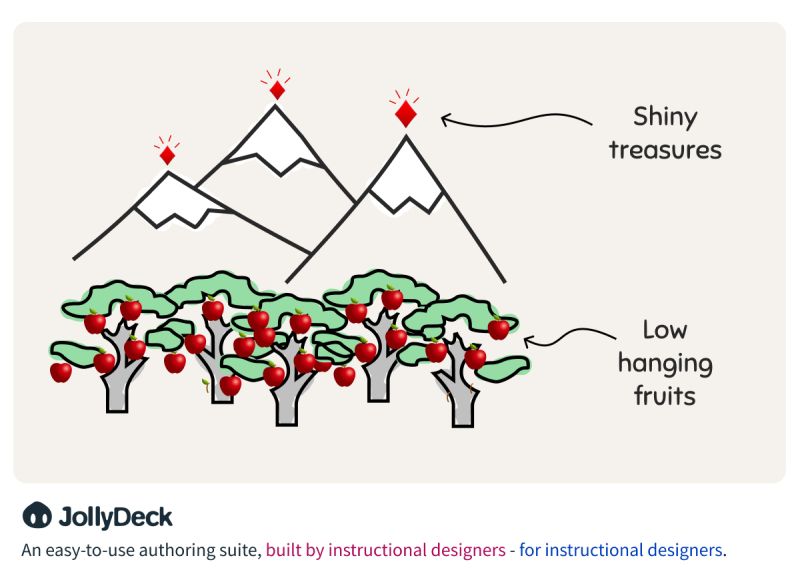
Matija Hiti, 13/08/2024
AI’s impact on workplace learning
Can AI resolve the biggest challenges in workplace learning? While it's hard to predict the future, AI is already addressing smaller issues with promising solutions. At JollyDeck, we're focusing on low-risk AI tools like AI-Copilot and a PowerPoint converter to enhance e-learning. How do you view AI’s role—aiming for major innovations or tackling immediate problems?
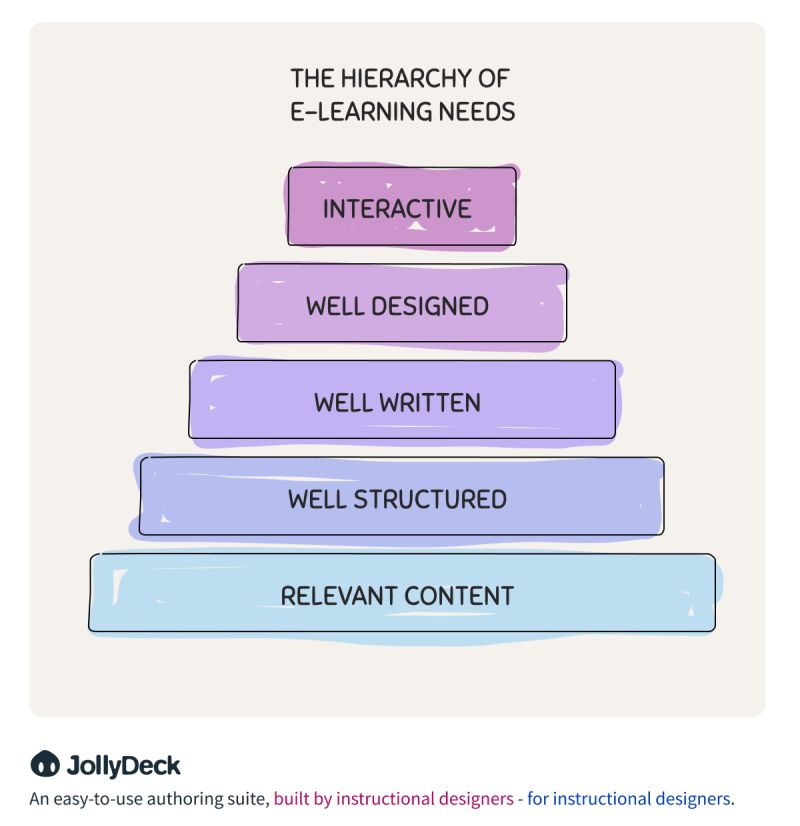
Matija Hiti, 12/08/2024
Start e-learning with the script
Imagine you're a movie director—would you start with the script or special effects? The same applies to e-learning. While design and interactivity are crucial, strong content should always come first. Do you agree, or do you prefer a different approach?
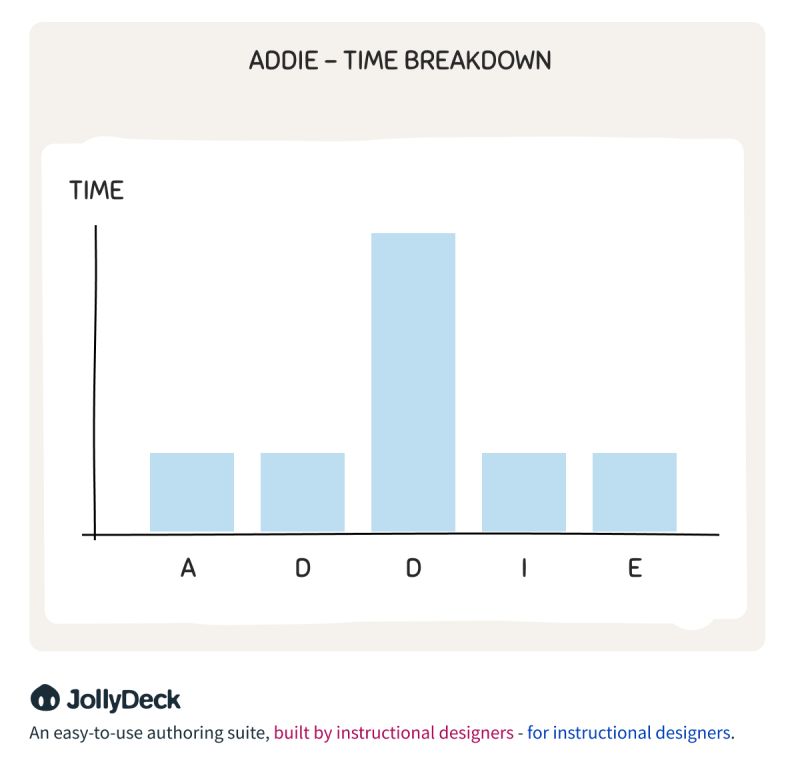
Matija Hiti, 08/08/2024
Time spent on ADDIE phases
How much time does your team spend on each ADDIE phase? In my experience, the development phase tends to take the most effort, but the quality of a learning programme depends on strong analysis and design. Does this match your experience? How would you ideally distribute the time?
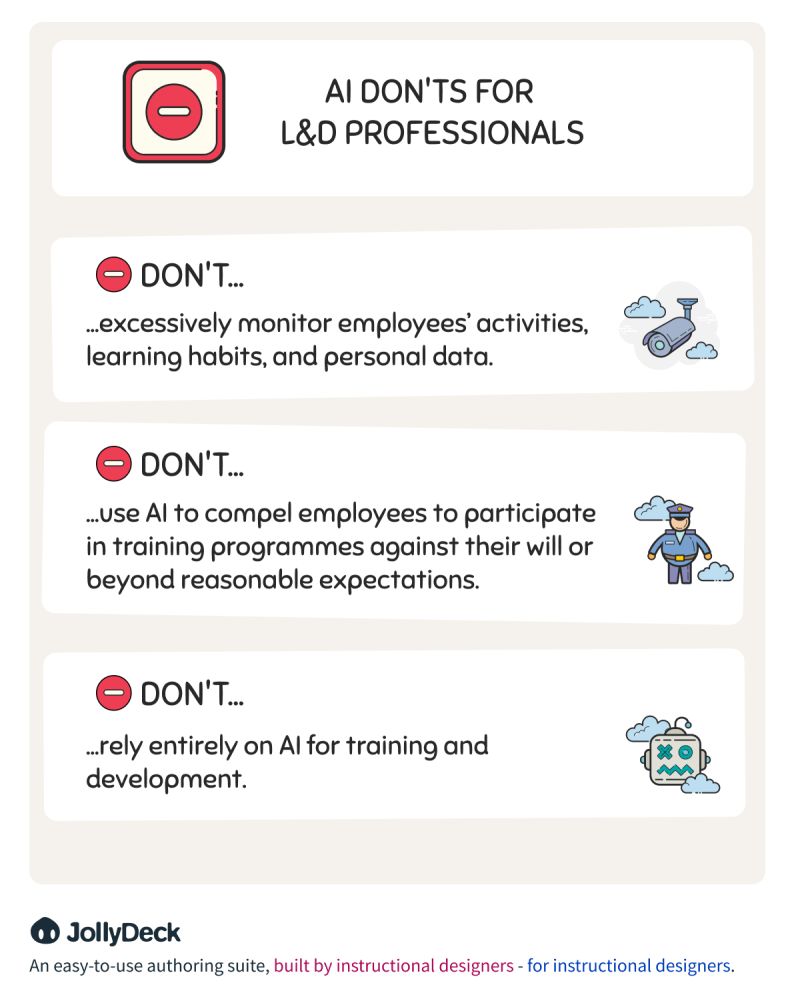
Matija Hiti, 06/08/2024
Avoiding unethical AI in L&D
AI is reshaping L&D, but not all uses are ethical or beneficial. From over-personalising learning experiences to enforcing compliance and reducing human interaction, some AI applications could compromise our values and well-being. What other uses should we avoid?
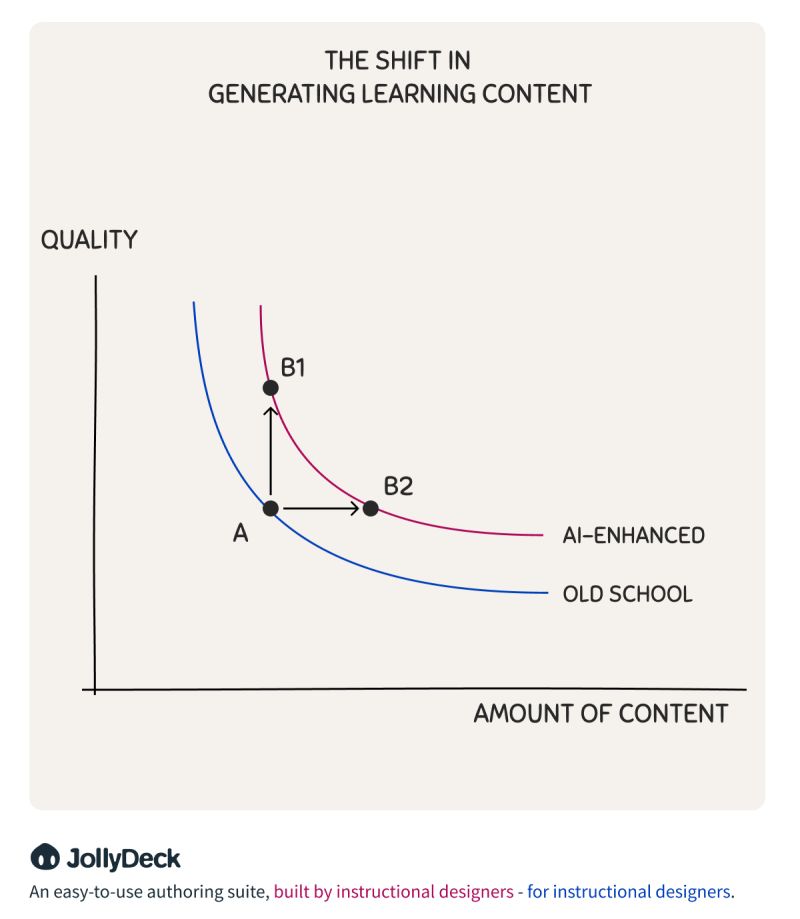
Matija Hiti, 05/08/2024
Choosing AI’s impact on productivity
What will we do with our new AI superpowers? AI is already helping us work faster and better, and it’s up to us to decide how we use this capability—whether to produce more content quickly or to focus on creating higher-quality work.
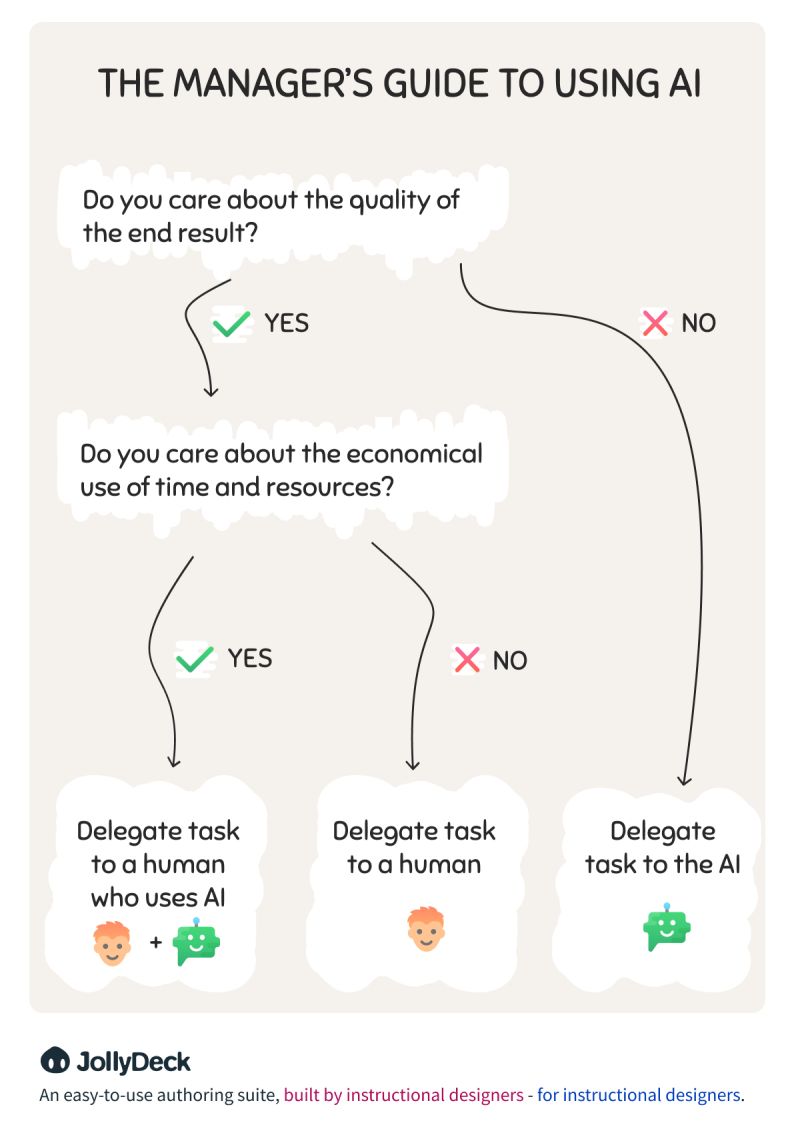
Matija Hiti, 01/08/2024
AI is for enhancing, not replacing
I met a manager who believes AI will soon replace many of his employees. But the real focus should be on empowering teams to use AI to boost productivity, not on making them feel insecure. That’s the job of a good manager.
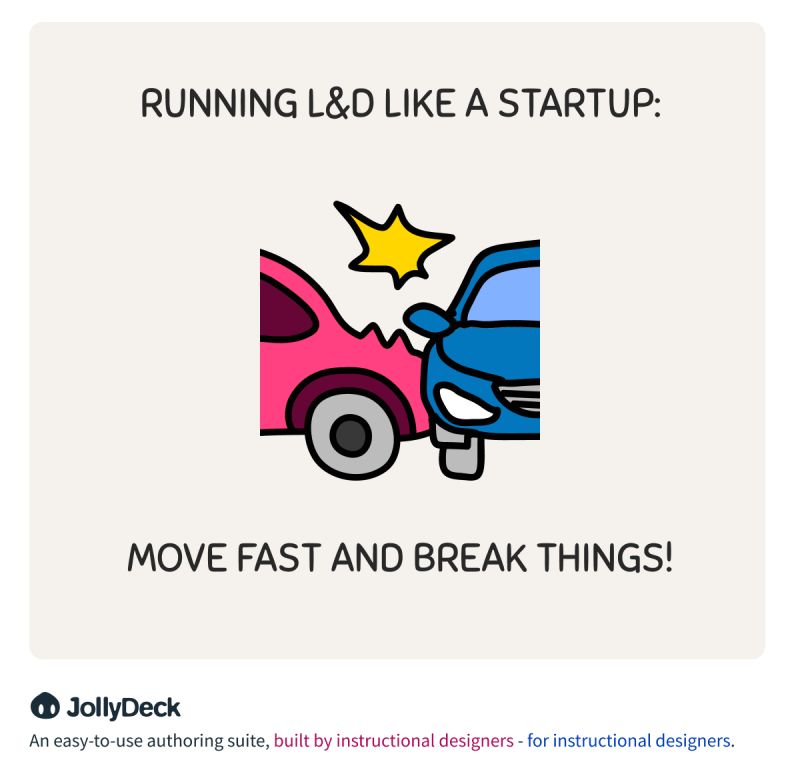
Matija Hiti, 30/07/2024
L&D needs evolution, not disruption
“Run L&D like a startup,” they say, but 90% of startups fail. L&D should focus on building long-term employee relationships, not risky disruptions. Instead, let's aim for gradual, steady improvements that prove their value step by step.
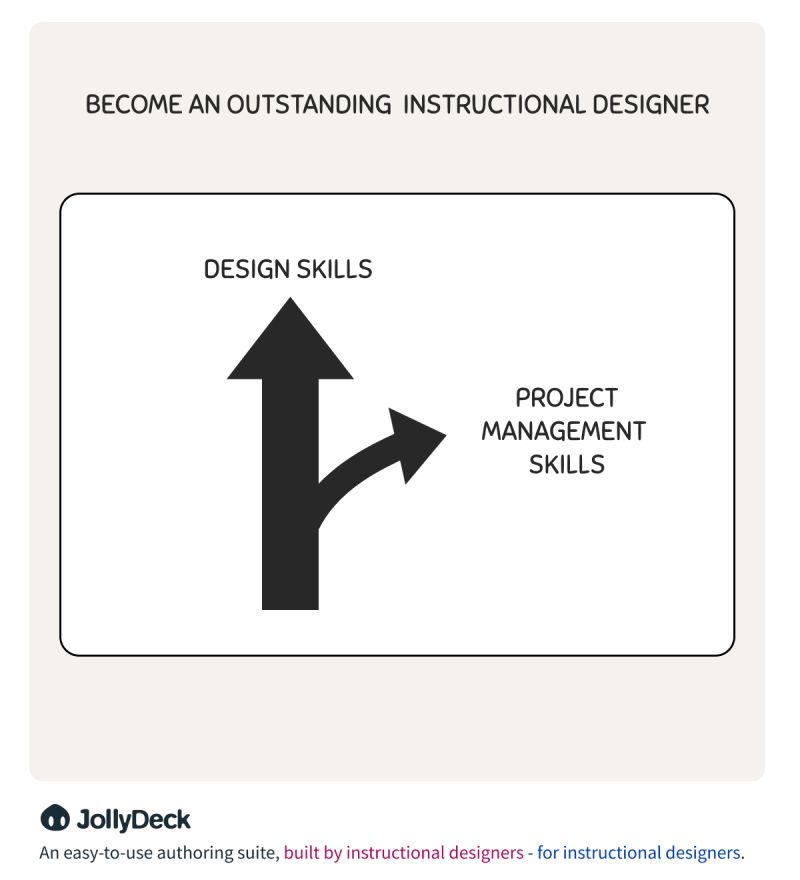
Matija Hiti, 29/07/2024
Key skills for instructional designers
Becoming an outstanding instructional designer isn't about copying others—it's about mastering both design and human-specific skills like communication, problem-solving, and project management. With AI simplifying design, it's time to focus on what truly matters for creating impactful learning content.
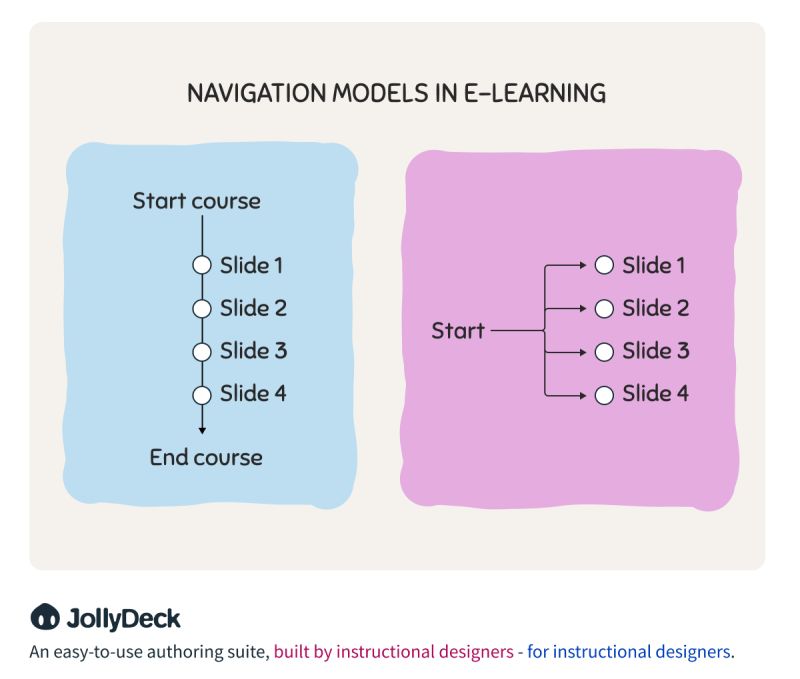
Matija Hiti, 25/07/2024
Choosing the right e-learning navigation
Which e-learning navigational model works best for learners? While flexible navigation is great for quick information access, linear guidance is better for learning new topics. It’s about choosing the right model for the right situation. What’s your approach?
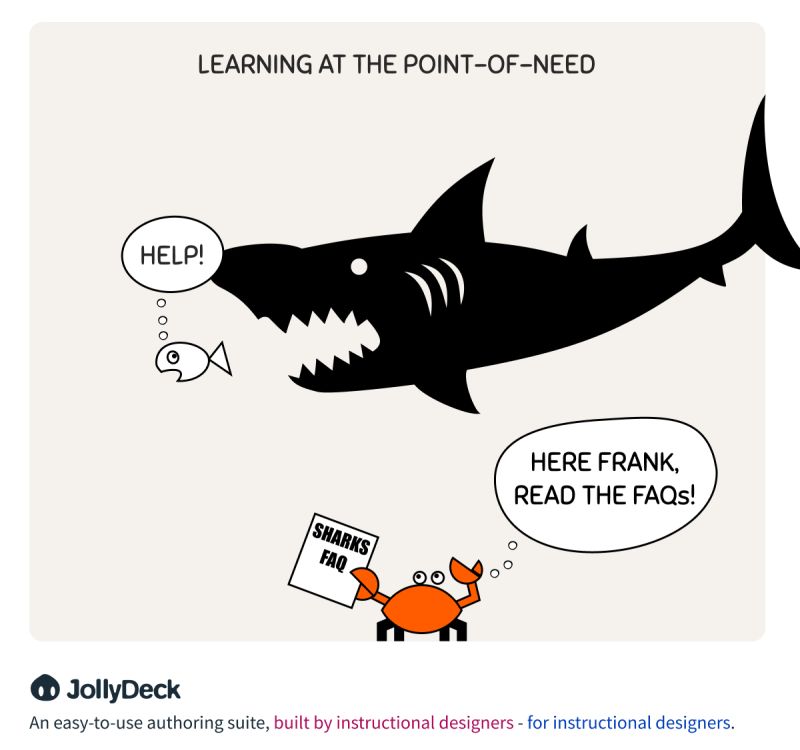
Matija Hiti, 23/07/2024
Learning isn’t one-size-fits-all
Some L&D professionals push learning at the point of need for their own convenience. While performance support tools are great, not everything can be learned on the spot. Effective learning requires a mix of preparation and real-time support, depending on the situation.
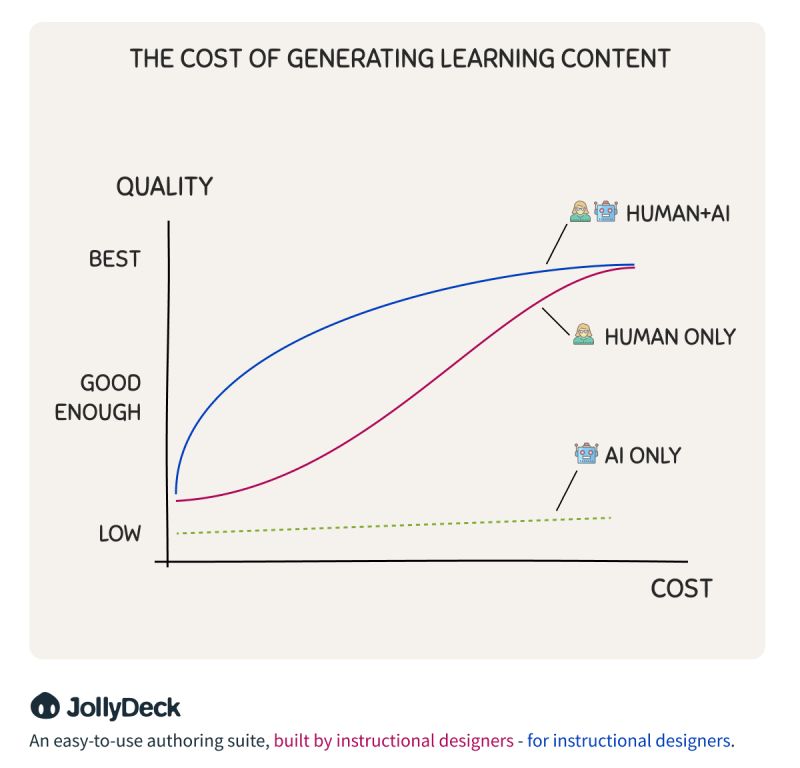
Matija Hiti, 22/07/2024
Maximising content quality with AI
My business economics professor taught me: you can't maximise quality with minimal costs. The same goes for creating learning content. AI won't create the best content ever, but it helps achieve "good enough" quality efficiently or improves content when resources are tight.
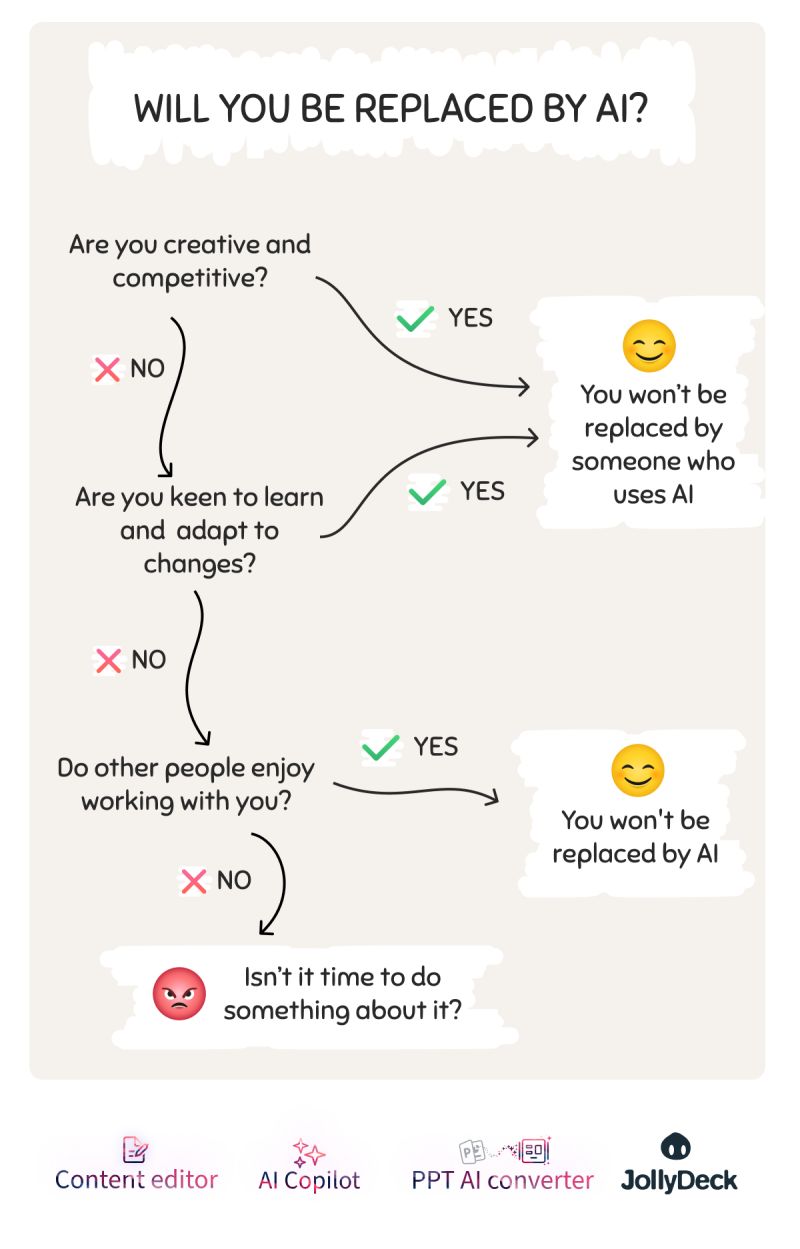
Matija Hiti, 09/07/2024
AI isn’t after your job
AI isn't coming for your job; it's people you need to watch out for. But AI can be a powerful tool to help us work smarter and better, enhancing the human aspects of our jobs that truly matter. That doesn’t sound so bad, does it?
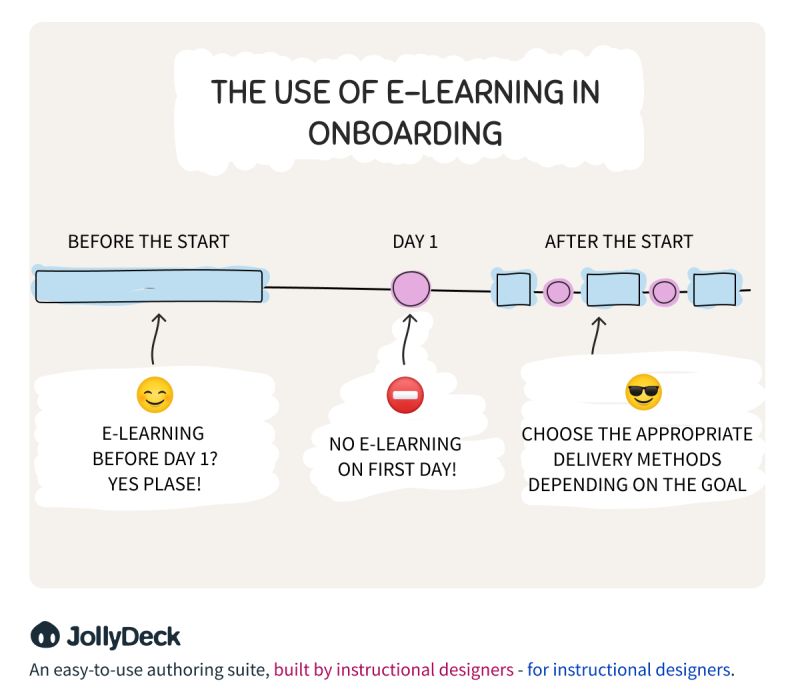
Matija Hiti, 01/07/2024
Onboarding pitfalls with e-learning
A friend's new job started with a frustrating onboarding experience—endless e-learning on day one, no team interaction, and no tasks. It could have been better with a mix of pre-assigned learning and a human touch on the first day. Know when and how to use e-learning effectively!
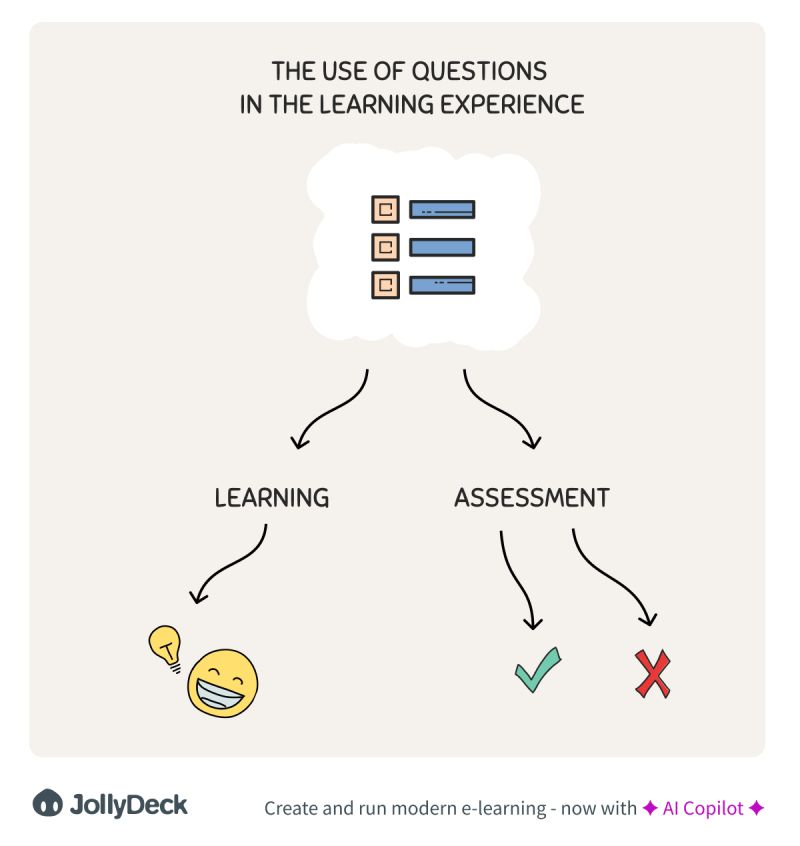
Matija Hiti, 26/06/2024
Rethinking questions in e-learning
Great teachers use questions to engage, not just to test. So why do most e-learning courses stick to the Course/Assessment pattern? Starting with a question or poll can spark curiosity and motivate learners to dive deeper. Let's rethink how we use questions in e-learning.